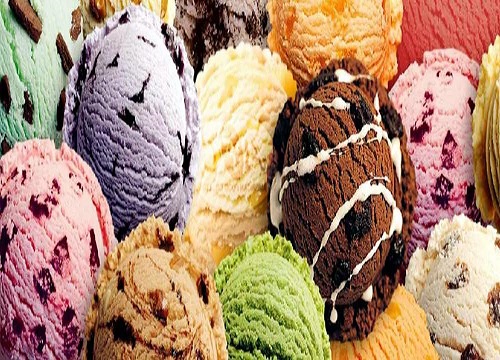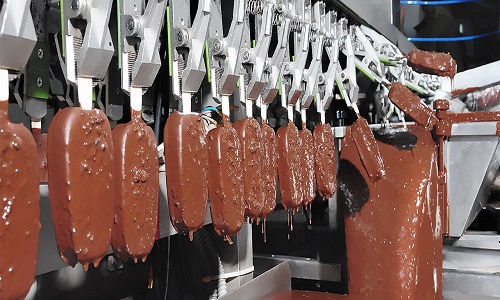Skip to content

Ice cream can be divided into four main groups according to its composition:
– Ice cream made only from milk products
– Ice cream containing vegetable fat
– Ice cream made from fruit extracts
– ice cream
An overview of the ice cream production line:
– Preparation of raw materials
– Weighing ice cream ingredients
– mix
– Homogenization
– Pasteurization
– Achieving the mixture
– Adding flavoring and coloring
– freezing
Preparation of basic ingredients:
Primary ingredients include:
– fat
– Non-fatty solids
– Water
– Sugar
– Emulsifiers
– stabilizer
– Flavors
– Colorant

Ice cream production steps:
Receiving stage:
Dry production materials (powder, milk serum, stabilizer, emulsifier, cocoa powder, etc.)
In high volumes, they are prepared by special machines.
Production liquid materials (milk, cream, condensed milk, liquid glucose, vegetable fat, butter)
Milk products must be cooled before shipping.
sweetened condensed milk and glucose and vegetable oil for preservation
Viscosity should be kept at a relatively high temperature of 30 to 35 degrees.
Weighing and mixing ice cream ingredients:
All ingredients are weighed and their weights are checked and recorded.
Finally, they are mixed in a tank with a stirrer.
The order of addition depends on the temperature and their solubility.
Uniformization of fat cells (homogenization):
that the product flows towards the heat exchange unit.
The temperature is 73 to 75 degrees. Fats are homogenized under high pressure.
The purpose of fat homogenization is to create an emulsion state
And the homogenized product has the ability to mix well
Its texture will have a better quality during storage.
Pasteurization:
It is done at a higher temperature.
It is due to the high viscosity of solid materials and the protective effect on microbes, and the microbes are destroyed.
Advantages of pasteurization:
– Better interaction of fat and emulsifiers
– Increasing the viscosity of the mixture due to denaturation of proteins
Delivery of the mixture:
The mixture is left in the ripening tanks for 3 to 6 hours to crystallize the fats and absorb the protein and stabilizers into the water.
Advantages of this step:
– Water absorption by hydrocolloids and proteins
– Crystallization of fat cells
– Absorption of proteins and emulsifiers on fat globules
Adding flavors and colors:
Flavoring is added in three steps:
– The first step when formulating and mixing
– The second stage in the flavoring tank and just before freezing
– Before packing
freezing:
An important step that affects the quality and efficiency of the product.
The more formed ice crystals and the smaller their size, the better the quality of the final product.
The number of crystals depends on protein and fat. The more they are, the more crystals there are.
Continuous freezing:
Continuous type freezers have two actions:
– Stirring a certain and controlled amount of air inside the mixture
– Freezing the water contained in the mixture in the form of small ice crystals
Finally, it is molding and packaging.

